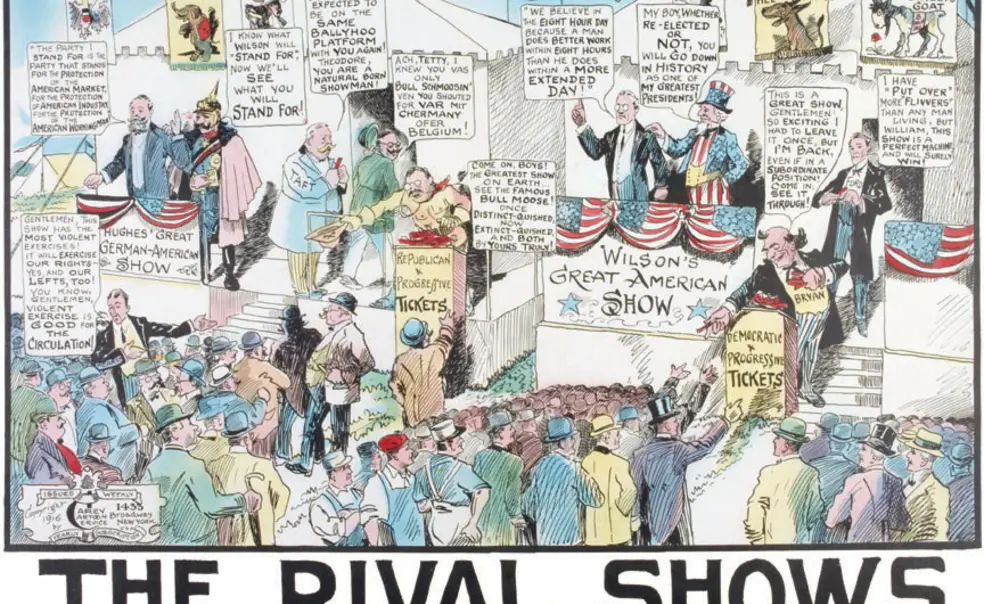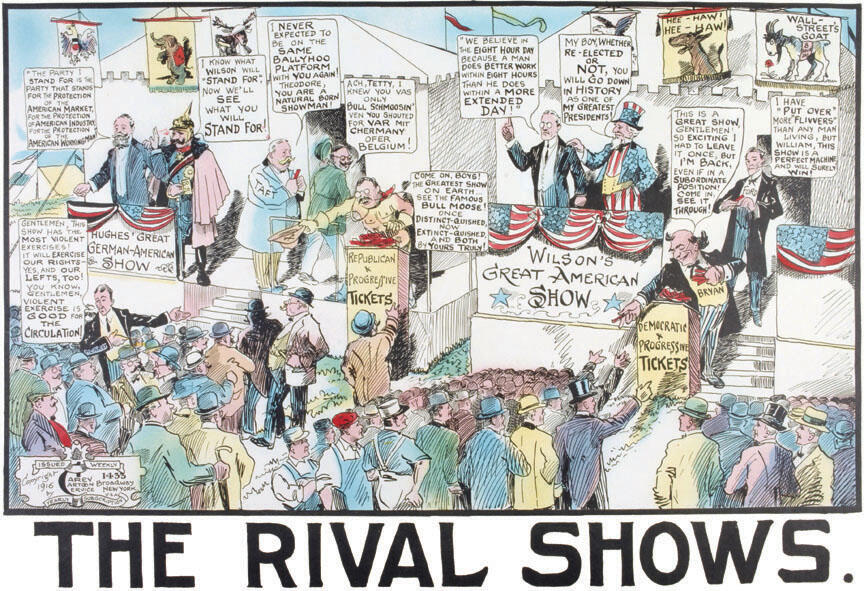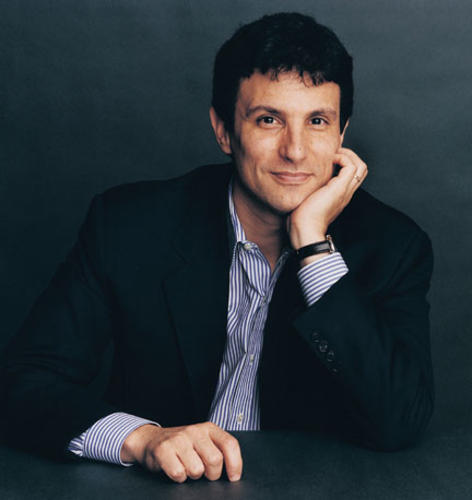Laughing through November
Even when the nastiness of politics is at its worst, count on political cartoonists to get the joke. Through Jan. 4, 2009, the Leonard L. Milberg Gallery in Firestone Library is presenting “Sketching Their Characters: 150 Years of Political Cartoons,” with cartoons poking fun at campaigns and presidents from Andrew Jackson to George H.W. Bush.
There, in a drawing by the influential Thomas Nast, is 1888 Republican nominee Benjamin Harrison wearing the too-large hat of his grandfather, President William Henry Harrison, with department-store magnate John Wanamaker standing by his side. (Wanamaker’s reward after Harrison’s election was appointment as postmaster general.) A 1932 cartoon by an unknown artist mocks Herbert Hoover — who insisted that prosperity was “just around the corner” as Americans stood in bread lines — by showing Hoover on his derriere after being struck by a lightning bolt labeled “Hoover prosperity.” Cartoonist John Darkow captured the 1992 campaign by picturing the senior George Bush, running mate Dan Quayle, and James A. Baker III ’52 in a hot-air balloon (drawn as an elephant). The president frantically dumps out the kitchen sink to make the balloon lighter, but it’s not enough. “I keep sinking, Jim — what else can I throw out?” Bush asks Baker, who stands glumly next to Quayle.
The Firestone exhibition features original cartoons, most in black and white, dating from 1828 to 1992. While the names may change over the years, curators note, many things do not: Backroom deals, negative campaigning, and questions about conduct have “tickled and outraged” cartoonists for generations.
David Remnick ’81: How to draw the line in political satire
As editor of The New Yorker for the last 10 years, David Remnick ’81 has seen plenty of cartoons, from single-panel drawings inside the magazine to the satirical images often featured on the cover. In August, Remnick spoke about political cartoons with PAW’s Brett Tomlinson.
What do you look for in political or satirical images? What makes a piece cover-worthy?
Political covers, first of all, ought to have something to say, and they ought to be funny. That sounds like a very simple recipe, but it is about as hard to accomplish as walking across a tightrope or bungee jumping into the Grand Canyon. The number of artists who do it for us successfully and consistently you can pretty much count on one hand.
For example, let’s take Barry Blitt. An example of his genius occurred on the week when two events were in the air. One, [Idaho Sen.] Larry Craig had been caught in a men’s room in Minneapolis, trying to seduce an undercover cop. ... And at the same time, Mahmoud Ahmadinejad was declaring that in Iran, there are no homosexuals. Now these are fairly disparate elements, and the image that Barry came up with was to have Ahmadinejad reading a newspaper in a bathroom stall with a foot inching under the wall of the stall toward his own foot. What that did was instantly, in the funniest way possible, join these dual hypocrisies, Iranian and American. Hypocrisy was the target, and Barry hit the bull’s-eye.
In July, Blitt’s cover satirizing the smears of Barack Obama and his wife, Michelle ’85, was viewed by some as offensive. Did you anticipate a negative reaction?
Whenever you publish a political image, you expect that some people are going to be offended. But you want them to be offended for a good reason. ... What Barry Blitt had in mind with “The Politics of Fear” was to take all the lies, stereotypes, and false images that were being painted of Barack Obama, on Fox News and in the kind of attack books we now see being published, and throw them into one image to highlight just how crazy, preposterous, and pernicious they were.
With an African-American and a woman in the presidential race this year, have artists and editors been more sensitive about how they portray race and gender?
Well, you don’t do anything rashly or blithely, and you should think about what images you’re publishing every bit as much as you think about what articles you publish. I think instinct can be a highly overrated quality in an editor. Mind has to play a great role. But not in the service of making everything acceptable to everyone. ... Caution to the point of blandness does no good at all.
Do you have any favorite cartoonists, either now or from the past?
I started my career at The Washington Post, and at that time, there was a cartoonist on the editorial page named Herblock. He was a kind of Promethean genius. He produced an editorial cartoon every day, just about, and he was very genial and sweet in person but a killer on the page. I don’t know that science can prove it, but I have a feeling that Richard Nixon might have lived longer had it not been for the relentless attacks of Herblock.
Do you think political cartoons can affect the way a person votes?
No, I really don’t. I think it can contribute to the cumulative way people think about something. Someone trying to think about Tammany Hall who saw Thomas Nast’s political cartoons over and over again would probably be affected by that. ... You can say the same thing about photographs — the first photographs of the Civil War or the photographs that appeared in Life magazine and elsewhere during Vietnam. Does one image change a person’s political views in an instant? I doubt it. But it has some cumulative effect and some importance.














No responses yet